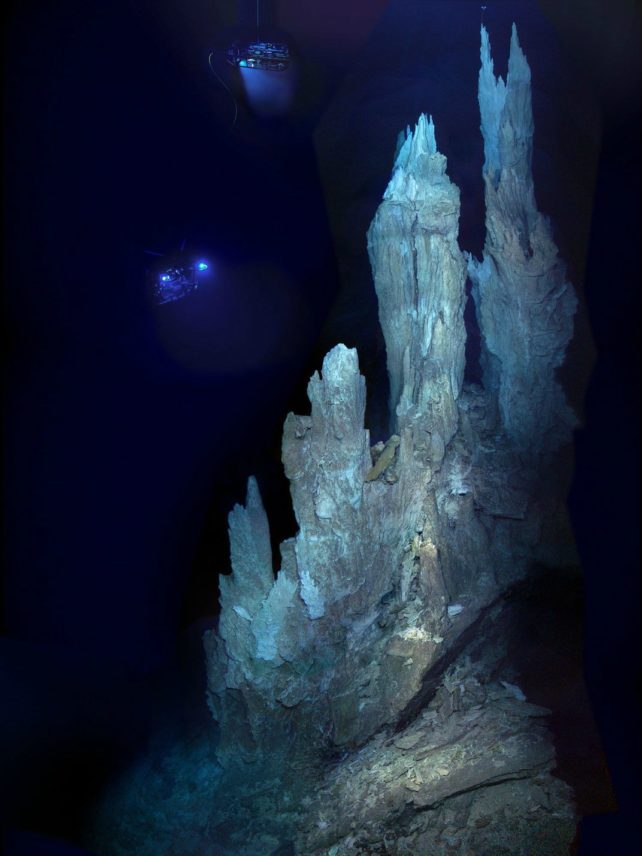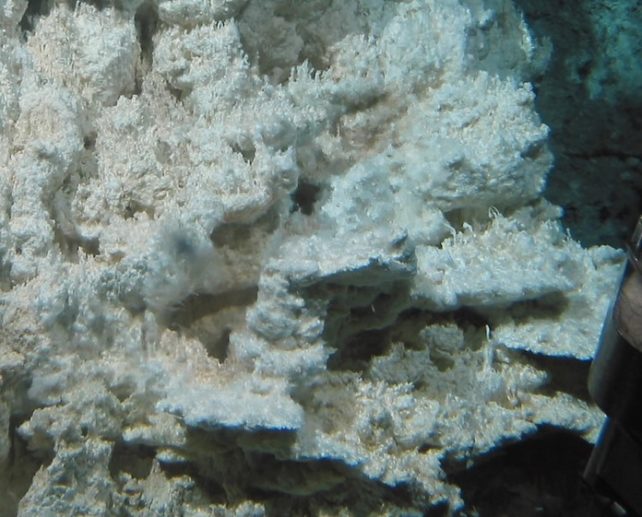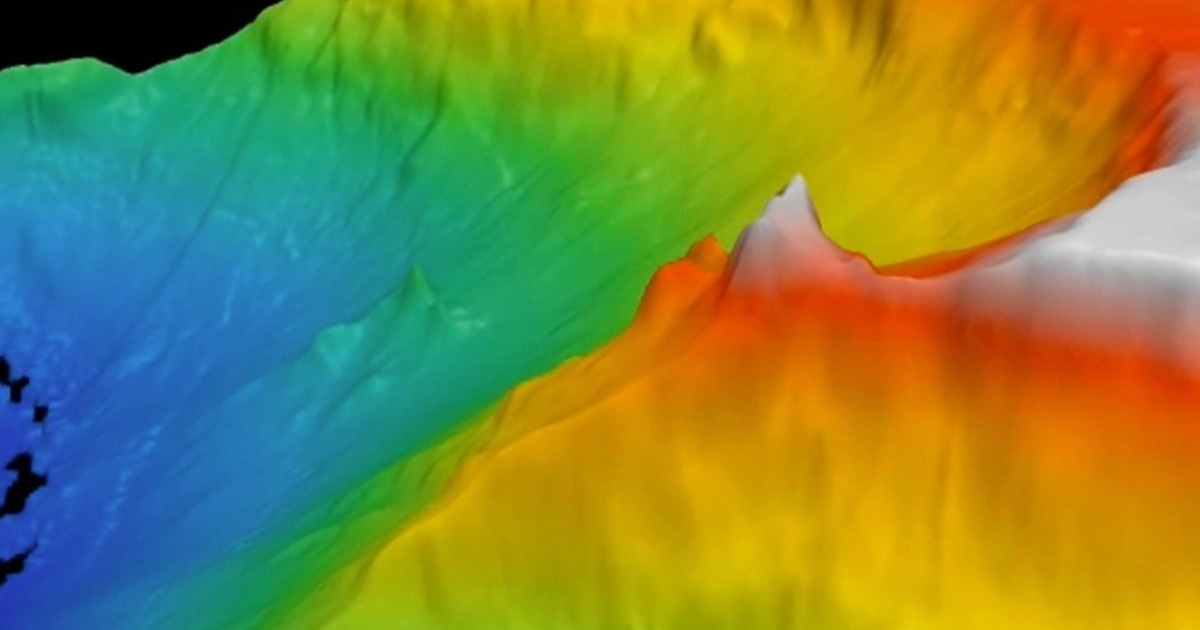Close to the summit of an underwater mountain west of the Mid-Atlantic Ridge, a jagged landscape of towers rises from the gloom.
Their creamy carbonate walls and columns appear ghostly blue in the light of a remotely operated vehicle sent to explore.
They range in height from tiny stacks the size of toadstools to a grand monolith standing 60 meters (nearly 200 feet) tall. This is the Lost City.
Discovered by scientists in 2000, more than 700 meters (2,300 feet) beneath the surface, the Lost City Hydrothermal Field is the longest-lived venting environment known in the ocean. Nothing else like it has ever been found.
 A remotely operated vehicle shines a light on the spires of the Lost City. (Photo credit: D. Kelley/UW/URI-IAO/NOAA)
A remotely operated vehicle shines a light on the spires of the Lost City. (Photo credit: D. Kelley/UW/URI-IAO/NOAA)
For at least 120,000 years and maybe longer, the upthrusting mantle in this part of the world has reacted with seawater to puff hydrogen, methane, and other dissolved gases out into the ocean.
In the cracks and crevices of the field's vents, hydrocarbons feed novel microbial communities even without the presence of oxygen.
Chimneys spewing gases as hot as 40 °C (104 °F) are home to an abundance of snails and crustaceans. Larger animals such as crabs, shrimp, sea urchins, and eels are rare, but still present.
Despite the extreme nature of the environment, it appears to be teeming with life, and researchers think it's worth our attention and protection.
While other hydrothermal fields like this one probably exist elsewhere in the world's oceans, this is the only one remotely operated vehicles (ROVs) have been able to find thus far.
The hydrocarbons produced by the Lost City's vents were not formed from atmospheric carbon dioxide or sunlight, but by chemical reactions on the deep seafloor.
 Strands of bacteria living on a calcite vent in the Lost City. (Photo credit: University of Washington/CC BY 3.0)
Strands of bacteria living on a calcite vent in the Lost City. (Photo credit: University of Washington/CC BY 3.0)
Because hydrocarbons are the building blocks of life, this leaves open the possibility that life originated in a habitat just like this one. And not just on our own planet.
"This is an example of a type of ecosystem that could be active on Enceladus or Europa right this second," microbiologist William Brazelton told The Smithsonian in 2018, referring to the moons of Saturn and Jupiter.
"And maybe Mars in the past."
Unlike underwater volcanic vents called black smokers, which have also been named as a possible first habitat, the Lost City's ecosystem doesn't depend on the heat of magma.
Black smokers produce mostly iron- and sulfur-rich minerals, whereas the Lost City's chimneys produce up to 100 times more hydrogen and methane.
 Nine-meter-high chimney in the Lost City. (Photo credit: University of Washington/Woods Hole Oceanographic Institution)
Nine-meter-high chimney in the Lost City. (Photo credit: University of Washington/Woods Hole Oceanographic Institution)
The calcite vents of the Lost City are also much, much larger than black smokers, which suggests they've been active for longer.
The tallest of the monoliths is named Poseidon, after the Greek god of the sea, and it stretches more than 60 meters high.
Just northeast of the tower, meanwhile, is a cliffside with short bursts of activity. Researchers at the University of Washington describe the vents here as 'weeping' with fluid to produce "clusters of delicate, multi-pronged carbonate growths that extend outward like the fingers of upturned hands".
Unfortunately, scientists aren't the only ones beckoned by that unusual terrain.
In 2018, it was announced that Poland had won the rights to mine the deep sea around The Lost City. While there are no precious resources to be dredged up in the actual thermal field itself, the destruction of the city's surroundings could have unintended consequences.
Any plumes or discharges, triggered by the mining, could easily wash over the remarkable habitat, scientists warn. Some experts are therefore calling for the Lost City to be listed as a World Heritage site, to protect the natural wonder before it's too late.
For tens of thousands of years, the Lost City has stood as a testament to the enduring force of life.
It would be just like us to ruin it.



